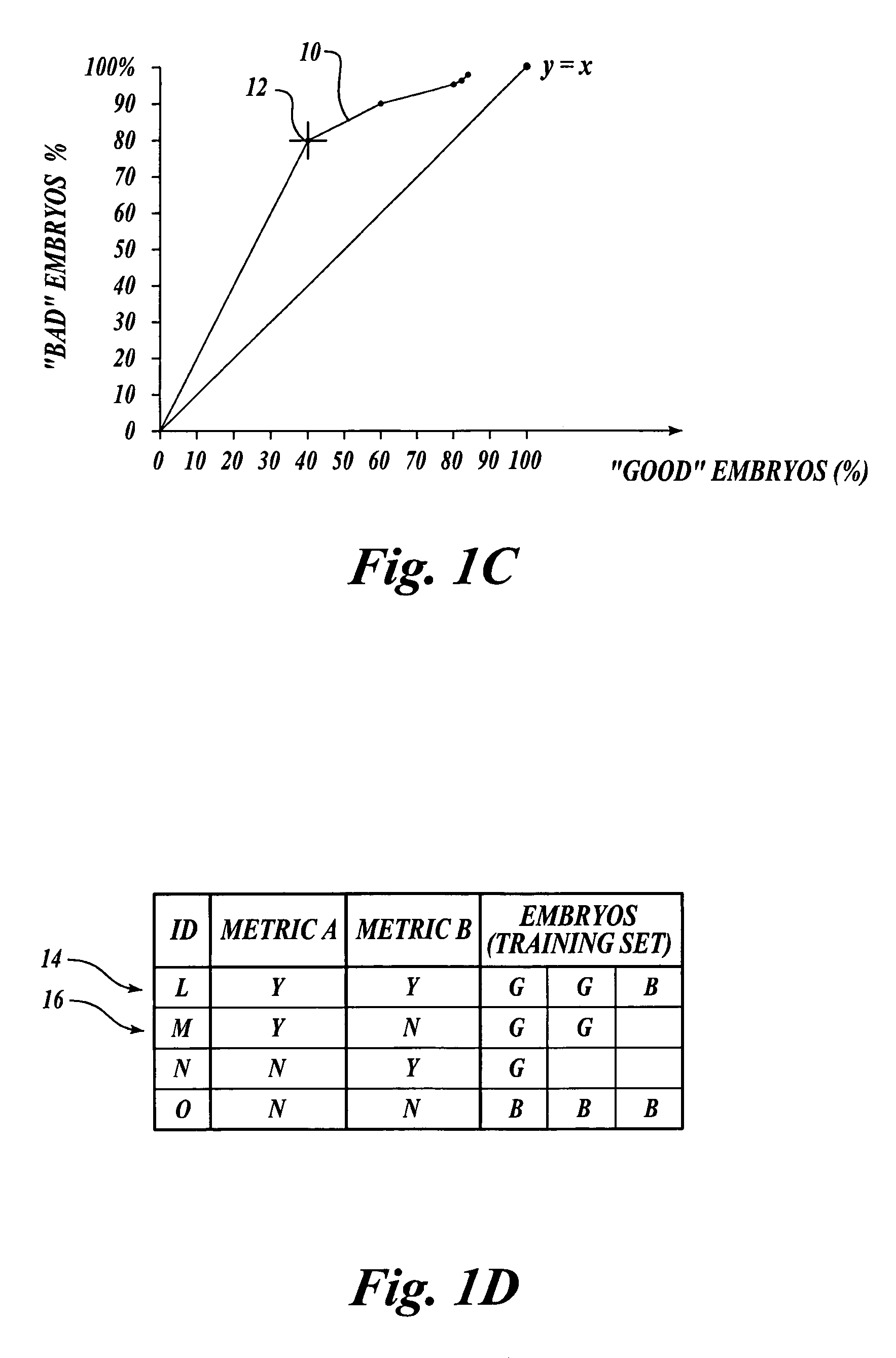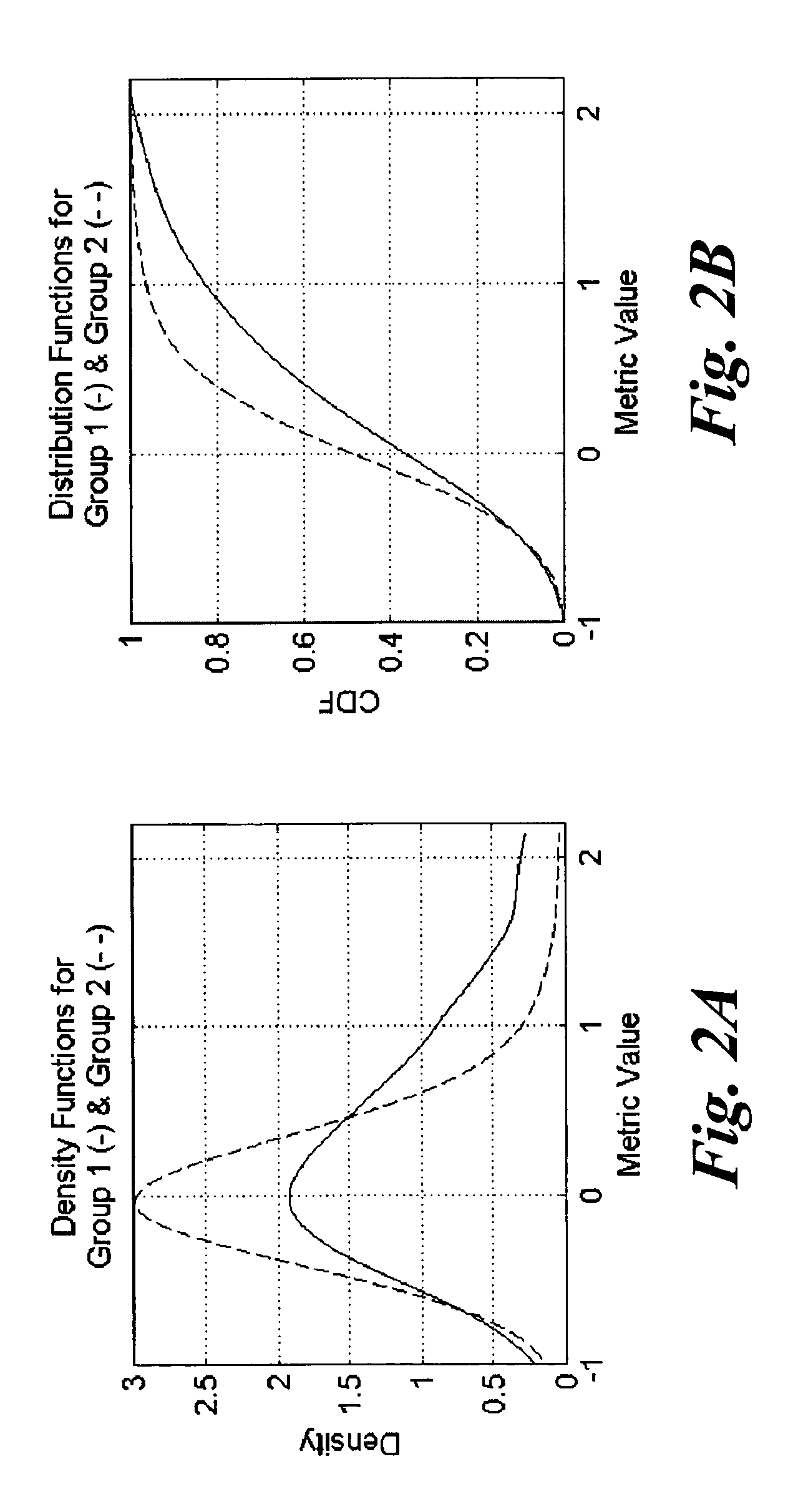General method of classifying plant embryos using a generalized Lorenz-Bayes classifier
a technology of plant embryos and classifiers, applied in chemical methods analysis, biochemistry apparatus and processes, instruments, etc., can solve the problems of high cost, time-consuming and expensive, laborious and subjective, and highly skilled yet tedious jobs, so as to speed up the process of finding a classifier, and improve the quality of the derived classifier.
- Summary
- Abstract
- Description
- Claims
- Application Information
AI Technical Summary
Benefits of technology
Problems solved by technology
Method used
Image
Examples
Embodiment Construction
[0044]The methods of the present invention may be used to classify any type of plant embryos, including both zygotic and somatic embryos, according to their embryo quality. The embryo quality may be determined based on any criteria susceptible to characterization or quantification. For example, the embryo quality may be determined based on one or more criteria, such as the embryo's conversion potential (i.e., potential for germination and subsequent plant growth and development), resistance to pathogens, drought resistance, heat and cold resistance, salt tolerance, preference for (or indifference to) light quality, suitability for long term storage, and the like. As more information is known about plant embryos and their desirability, more criteria may be developed to further refine the selection process to identify only truly “high-quality” embryos with various desirable characteristics. For the purpose of the present description, however, it suffices to note that plant embryos are...
PUM
| Property | Measurement | Unit |
|---|---|---|
| density functions | aaaaa | aaaaa |
| density | aaaaa | aaaaa |
| size | aaaaa | aaaaa |
Abstract
Description
Claims
Application Information
 Login to View More
Login to View More - R&D
- Intellectual Property
- Life Sciences
- Materials
- Tech Scout
- Unparalleled Data Quality
- Higher Quality Content
- 60% Fewer Hallucinations
Browse by: Latest US Patents, China's latest patents, Technical Efficacy Thesaurus, Application Domain, Technology Topic, Popular Technical Reports.
© 2025 PatSnap. All rights reserved.Legal|Privacy policy|Modern Slavery Act Transparency Statement|Sitemap|About US| Contact US: help@patsnap.com



